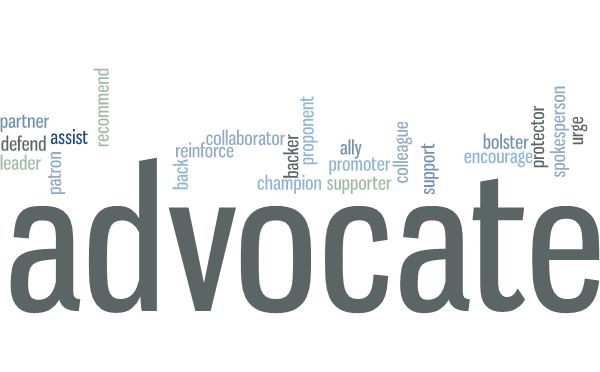
Digital Learning Mission Statement
Digital Citizen Advocate is one of the most important roles I will undertake as a digital education leader. As a digital citizen advocate, International Society for Technology Education (ISTE) Coaches Standard 7, I see myself in the role of guide and supporter, coincidentally, this is how I view my role as a classroom teacher too. My personal mission is to help equip all stakeholders (educators, leaders, parents, and students) with the ability to identify the information they need to be successful and to use that information to make informed decisions. As an educator I have always believed that if you can read, you can do anything. Reading literacy and technology/media literacy are intrinsically connected; to be media literate, you need to be an effective and capable reader. There are three guiding values that I currently use when teaching reading literacy and I will also use them in my digital education advocacy: hope, critical thinking, and mutual respect.
Hope
As an educator in the 21st century, during a pandemic, hope is sometimes in short supply. Not only for teachers, but for leaders, families, and, most importantly, students. Hope is a word with many definitions, but the one I will use in my mission statement comes from Chan Hellman, PhD., he defines hope as “the belief that your future will be better than today and you have the power to make it so” (Hellman, 2021). Having and promoting hope relates to ISTE standard 7b “Partner with educators, leaders, students, and families to foster a culture of respectful online interactions and a healthy balance in their use of technology” (ISTE, n.d.). Teaching students to have a healthy balance in their technology use, especially when they are struggling with the sometimes-debilitating effects of social media usage is important for being able to find hope. Encouraging and teaching everyone to have respectful online interactions and educating on the effects of negative interactions also relates to hope. As a digital education leader, I need to critically examine the media I am allowing into my life and learn to carefully curate what I interact with every day to protect my emotional well-being. I also need to go a step further and teach all stakeholders to do the same.
Another ISTE standard that hope directly addresses is standard 7d “Empower educators, leaders, and students to make informed decisions to protect their personal data and curate the digital profile the intend to reflect” (ISTE, n.d.). People do not always foresee the long-term ramifications of the decisions they make online. As a digital educator leader, I feel it is my responsibility to educate stakeholders, focusing especially students, on the possible outcomes of not protecting their data and digital profiles. Students, especially younger students, lack the foresight to realize that what they do today can affect them 15-20 years down the road. When students have hope that their future is going to be better than today, then we have an opportunity to teach them to protect their digital image and information today, in the hope that their choices at 15 will not come back to haunt them at 25. All stakeholders need to understand that no technology is neutral because human agency is involved in the development of technology (Paulus, 2019). This also means that we all have agency when we interact with technology (Paulus, 2019; Schlosser, 2019). We can choose how we interact with technology and therefore, we can shape not only where technology goes but also how we represent ourselves digitally.
Critical Thinking
One of the main goals of education is to teach critical thinking skills to students. The problem with this goal is that there are many definitions for the term “critical thinking skills.” The definition that I will use for the purposes of my mission statement is: “careful goal-directed thinking” (Hitchcock, 2018). ISTE Standard 7c is: “Support educators and students to critically examine the sources of online media and identify underlying assumptions” (ISTE, n.d.). In education, it is too easy to walk down the slippery slope of telling students what to think, as opposed to giving them the tools to learn how to think for themselves. With the development of the internet and the absolute over saturation of information in our lives it is time that we start teaching our students, teachers, and really all citizens how to be digitally wise. Marc Prensky (2013) wrote that digital wisdom means making wiser decisions because of technology, he also states that it is something that can be learned and must be taught. This is where critical thinking comes to importance. I need to teach my students and community critical thinking skills in an online world, this is sometimes referred to as media literacy.
There are many theories and methods for teaching critical thinking online. The two that I gravitate towards the most are Harold Rheingold’s (2012) skepticism as default and Mike Claufield’s (2019) SIFT Method. Rheingold advocates that to properly assess information online, people need to have a healthy level of skepticism (2012). When people are skeptical about what they are reading, they are more likely to conduct additional research. Claufield’s SIFT method is an acronym that stands for “Stop, Investigate the source, Find better coverage, and Trace claims, quotes and media to the original context” (2019). Taking the time to teach these critical thinking skills and methods to all stakeholders will help encourage good researching skills, but it can also help with ISTE standard 7a “Inspire and encourage educators and students to use technology for civic engagement and to address challenges to improve their communities” (ISTE, n.d.). When we take the time to slow down and critically examine what we read online, we are also more likely to engage online in a positive manner. As a digital citizenship advocate, I will continue my work as an educator in teaching critical thinking and media literacy skills.
Mutual Respect
In my role as a digital education leader, a teacher, and a human being, it is my job to make sure that I am teaching and acting with respect. Like hope and critical thinking, respect has many definitions, the one I will be using is about mutual respect: mutual respect requires citizens to be reasonable, inclusive, tolerant and to be willing to compromise rather than to dogmatically defend one’s position without consideration for others (Bird, 2010). Encouraging and directly teaching mutual respect to all stakeholders relates to ISTE standard 7.b “Partner with educators, leaders, students, and families to foster a culture of respectful online interactions and a health balance in their use of technology” (ISTE, n.d.). Bird (2010) states that respect is something that we do, it is neither a belief nor something that we think. When we come from a place of respect, critical thinking becomes more natural, it does not remove bias, but it does remove contempt, allowing people to enter the process of critical evaluation when approaching new or different ideas.
Mutual respect should be the cornerstone of online interactions. When working on a computer, you cannot always communicate in the same manner that face-to-face communication allows. Hand gestures, facial expressions and tone are all lost when typing on a computer. While emojis have been a new way to add expression to online communication, something is still lost. This is where mutual respect comes into importance. When people come from a place of respect and start from a place of assuming good intentions, communication becomes easier.
Restorative practices in education are one of many ways that schools are teaching students and their larger communities about respect and mutual respect. Oliver (2020) points out that we do not know how someone wants to be respected until we ask two questions: how do you want to be respected and why? Once respect norms are established, it becomes easier to hold people accountable when they break these norms. This can be seen in instances of online bullying in schools. The behavior can be addressed in terms of the pre-defined group norms. Elenbaas and Killen (2021) state that mutual respect and an emphasis on inclusion are likely to lead to a decrease in bullying. Mutual respect is crucial to online interactions. I believe that in my role as a digital citizen advocate, I need to advocate for restorative practices in schools in an effort for students and staff to come together and define what respect looks like to them as a group. This is important because the conversation also includes how the adults in the school would like to be respected it. I recently learned that it is the role of schools to teach the behavior of school and the behaviors that will be expected after a student leaves school. If we focus on teaching students about respect, what it looks like, feels like, sounds like, etc., they will be more successful in having mutually respectful relationships in their lives. Subsequently, they will be more likely to engage in respectful interactions when using technology.
Conclusion
Digital education is a relatively new field. While schools began introducing computers into the classroom in the mid- to late-eighties, there has never been as intense a focus on computing as a life skill than in the last 5 years. According to the National Center for Education Statistics (n.d.) 40% of teachers in 2017-2018 school year had 10-20 years of teaching experience, and 23% of teachers had over 20 years of experience, meaning that more than half of our current teachers in the United States have been in the classroom since prior to 2007. While this may not sound significant, it becomes significant when you consider the fact that many states did not require digital citizenship and media literacy education prior to 2017 (Herold, 2016). As laws have been passed regarding the requirements for digital education and media literacy, not much has been offered in the way of training for teachers who have been in the profession for a decade or longer. This is where, I believe, that digital education advocates and leaders can make their greatest impact. Focusing on training and leading with the values of hope, critical thinking and respect will go a long way to support all stakeholders in the education field.
References
Bird, C. (2010). Mutual Respect and Civic Education. Educational Philosophy and Theory, 42(1), 112-128. https://doi.org/10.1111/j.1469-5812.2008.00508.x
Caulfield, M. (2019, June 19). SIFT (The four moves). Hapgood. https://hapgood.us/2019/06/19/sift-the-four-moves/
Elenbaas, L., & Killen, M. (2021). The importance of mutual respect, fairness, and compassion in Education Settings. Zeitschrift für Entwicklungspsychologie und Pädagogische Psychologie, 52(3-4), 57-63. https://doi.org/10.1026/0049-8637/a000229
International Society for Technology in Education. (n.d.). ISTE standards for coaches. International Society for Technology in Education. Retrieved September 23, 2021, from https://www.iste.org/standards/for-coaches
Hellman, C. (2021). The science and power of hope . TEDx Oklahoma City. https://www.ted.com/talks/chan_hellman_the_science_and_power_of_hope
Herold, B. (2016, October 28). K-12 digital citizenship initiative targets states. Education Week. https://www.edweek.org/technology/k-12-digital-citizenship-initiative-targets-states/2016/
Hitchcock, D. (2018). Critical Thinking. In Stanford Encyclopedia of Philosophy. Retrieved October 3, 2021, from https://plato.stanford.edu/entries/critical-thinking/#DefiCritThin
National Center for Education Statistics. (n.d.). Teacher Qualifications. National Center for Education Statistics. Retrieved November 21, 2021, from https://nces.ed.gov/fastfacts/display.asp?id=58
Paulus, M. J. (2019). A framework for digital wisdom in higher education. Christian Scholar’s Review, 49(1), 43-61. http://works.bepress.com/michael_paulus/68/
Prensky, M. (2012). Epilogue: From digital natives to digital wisdom. In, From Digital Natives to Digital Wisdom: Hopeful Essays for 21st Century Learning (pp. 201-216). Corwin Press. http://dx.doi.org/10.4135/9781483387765
Oliver, K. (2020). Restorative practices: How to a respect agreement cheat sheet. Leaving the Village LLC.
Rheingold, H. (2012). Net smart: How to thrive online. MIT Press.
Schlosser, M. (2019). Agency. In Stanford Encyclopedia of Philosophy. Retrieved October 3, 2021, from https://plato.stanford.edu/entries/agency/#AgeIniAge
